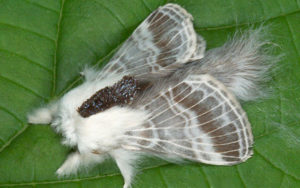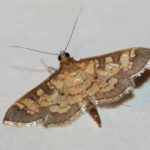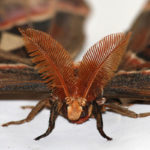Facts about moths
 In Australia there is a monument to moths. The monument was established for the reason that in the 1920s the South American cactus was catastrophically spread here, and the only Argentine cactus moth was the only one able to cope with it.
In Australia there is a monument to moths. The monument was established for the reason that in the 1920s the South American cactus was catastrophically spread here, and the only Argentine cactus moth was the only one able to cope with it.- If you kill a moth butterfly that circulates around the room, it does not mean that woolen things will be saved from destruction, since butterflies just lay their eggs in these things. Eat their already hatched from the caterpillars eggs, with which you need to fight special antimoluble drugs.
- One of the main enemies of moles is bats, so the moths learned to catch high-frequency signals in the course of evolution. It is noteworthy that males of many types of moles can themselves create similar signals by rubbing scales against each other to facilitate mating. Hearing such a sound and wanting to remain unnoticed by the bat, the female moth sits motionless than usual and uses the male.
- Currently, in the family of real moth specialists have more than 2300 different species of these insects.
- The female moth lays 50 to 300 eggs per week, and each of them hatchs a small caterpillar. An interesting detail: moths of furniture moths drop their eggs during the flight. Eggs also fall and things that can not serve as a future caterpillar food. In search of an edible caterpillar, you have to crawl, gnawing your way through cardboard, paper, cloth. The females of the carpet and fur moth behave differently – they crawl long enough to choose a place for eggs better. And the caterpillars are “lazy”, sedentary. But, despite this, the mole is dangerous just in the stage of an eternally hungry caterpillar.
- In heated rooms, a grain moth can produce two or three generations per year. In addition to stocks of seed, food and feed grains, it can damage even dry fruits, mushrooms and vegetables, as well as seeds of various agricultural and ornamental plants.




























